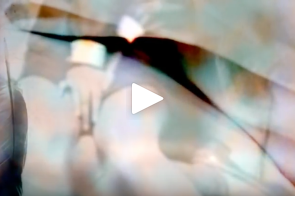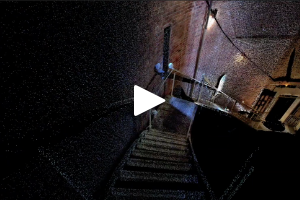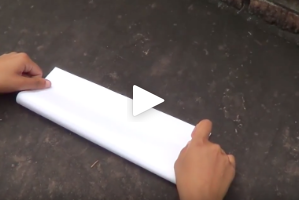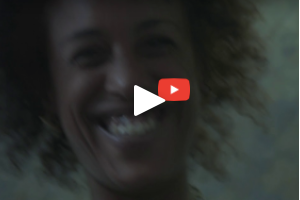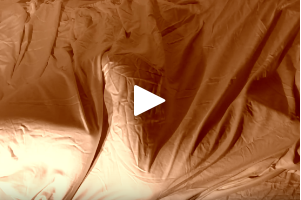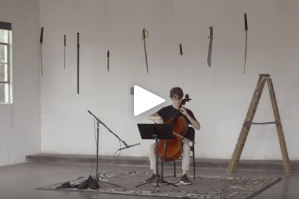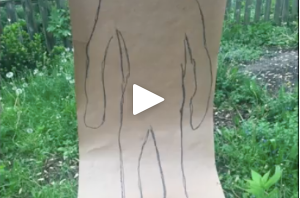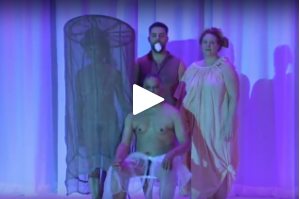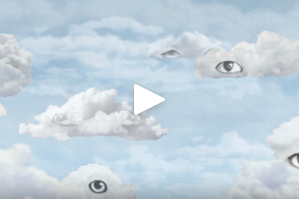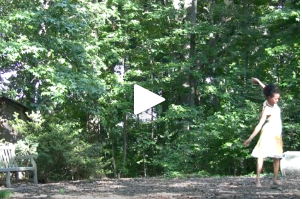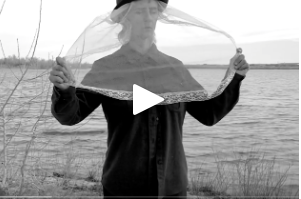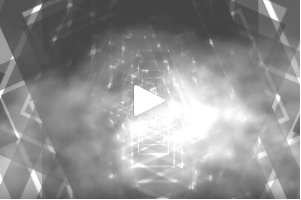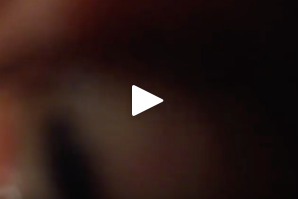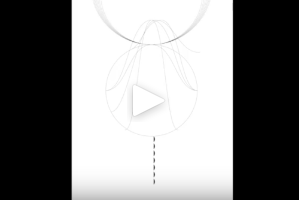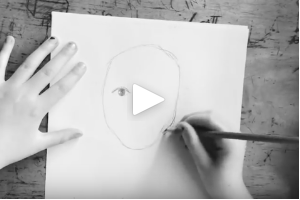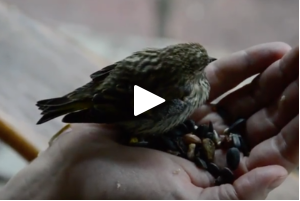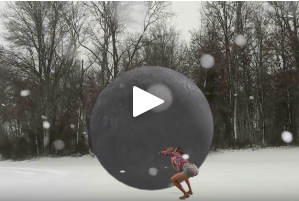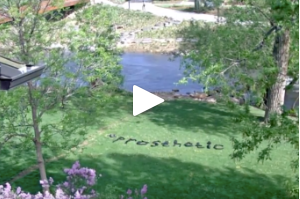INSTALLATIONS
Serena Chopra
INSTALLATION 1
The solitary person turns on the television and waits. The room is dedicated to her. It is her “hotel.” She lies down on the bed. No dust. Windows do not open. Through the floor, a treadmill’s rhythmic whine.
On the walls, photographs of people whose curved backs, whose exhausted flesh, need chemicals daily or hourly. Sheets of charred wallpaper hang from the ceiling and curl.
You are invited. You wander around looking for yourself among the photographs. Eventually you join the woman on the bed. If you sleep, you will dream of her hands on your face.
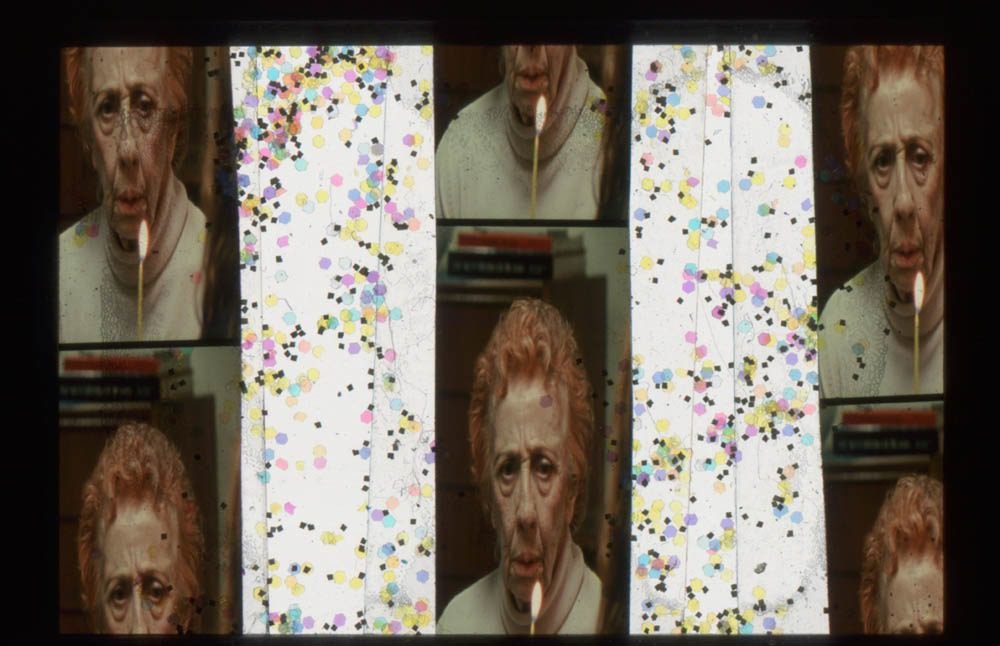
Luther Price
INSTALLATION 3
A mother walks down a long hallway carrying a strawberry birthday cake, frosted white. 37 candles lit. When she reaches her son, standing with his back to the wall, she blows the candles out.
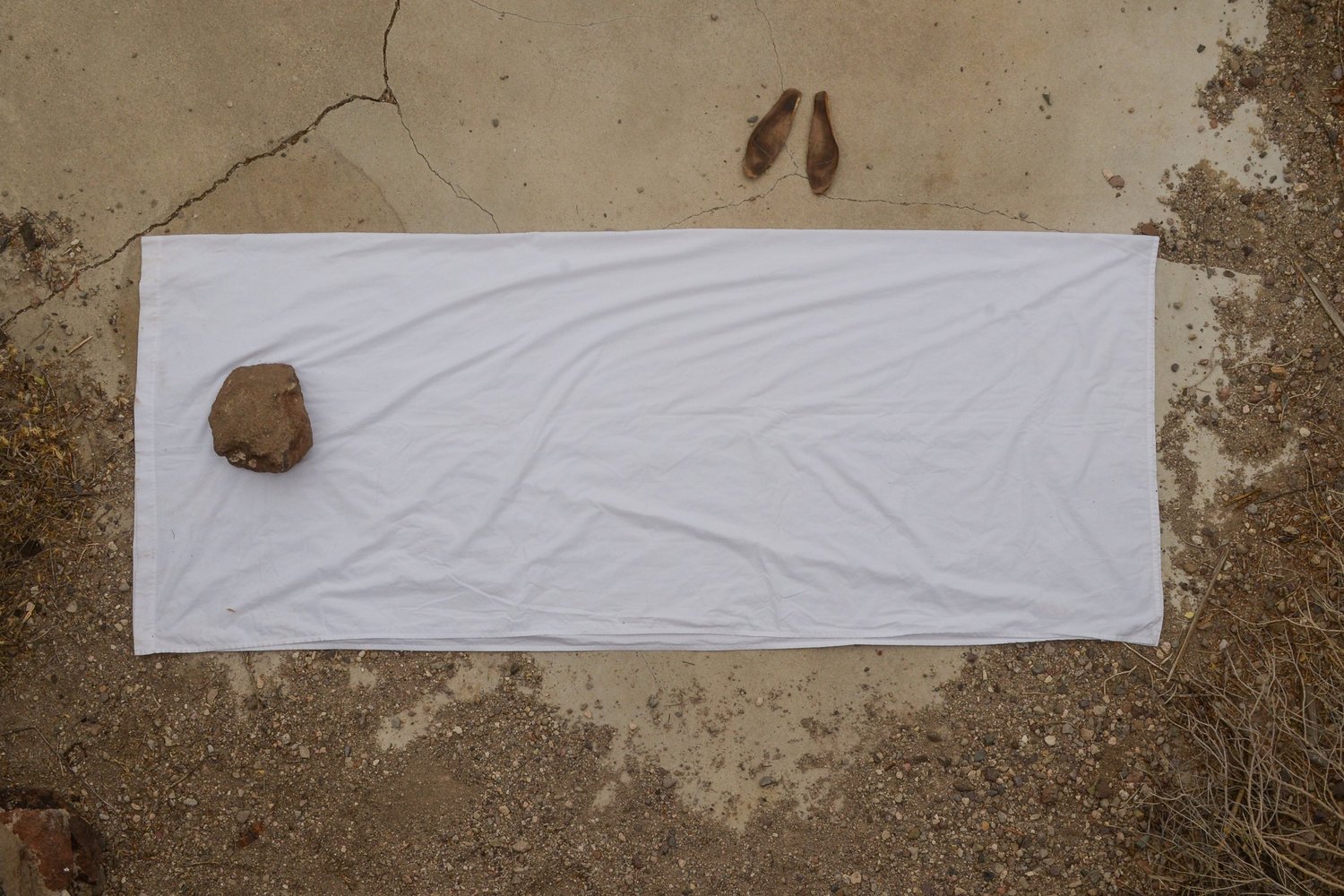
Robert Yerachmiel Sniderman and Benjamin M. Johnson
INSTALLATION 5
No door through which to enter, no door through which to leave. No visible light source, but there is light. It comes from everywhere. A body is sleeping on a platform, a white cloth over its face. impossible to know race, age, gender, whether sick or well. Rise and fall of the chest, a slight flutter at the edge of the cloth.
In an adjacent room sits anyone’s father, an old man. You can enter this room form one of six doors. No matter by which door you enter, you will confront only his back. No matter by which door you leave. From the angle of his head and the slight lift of his shoulders you can tell that he is listening to you as you come and go.
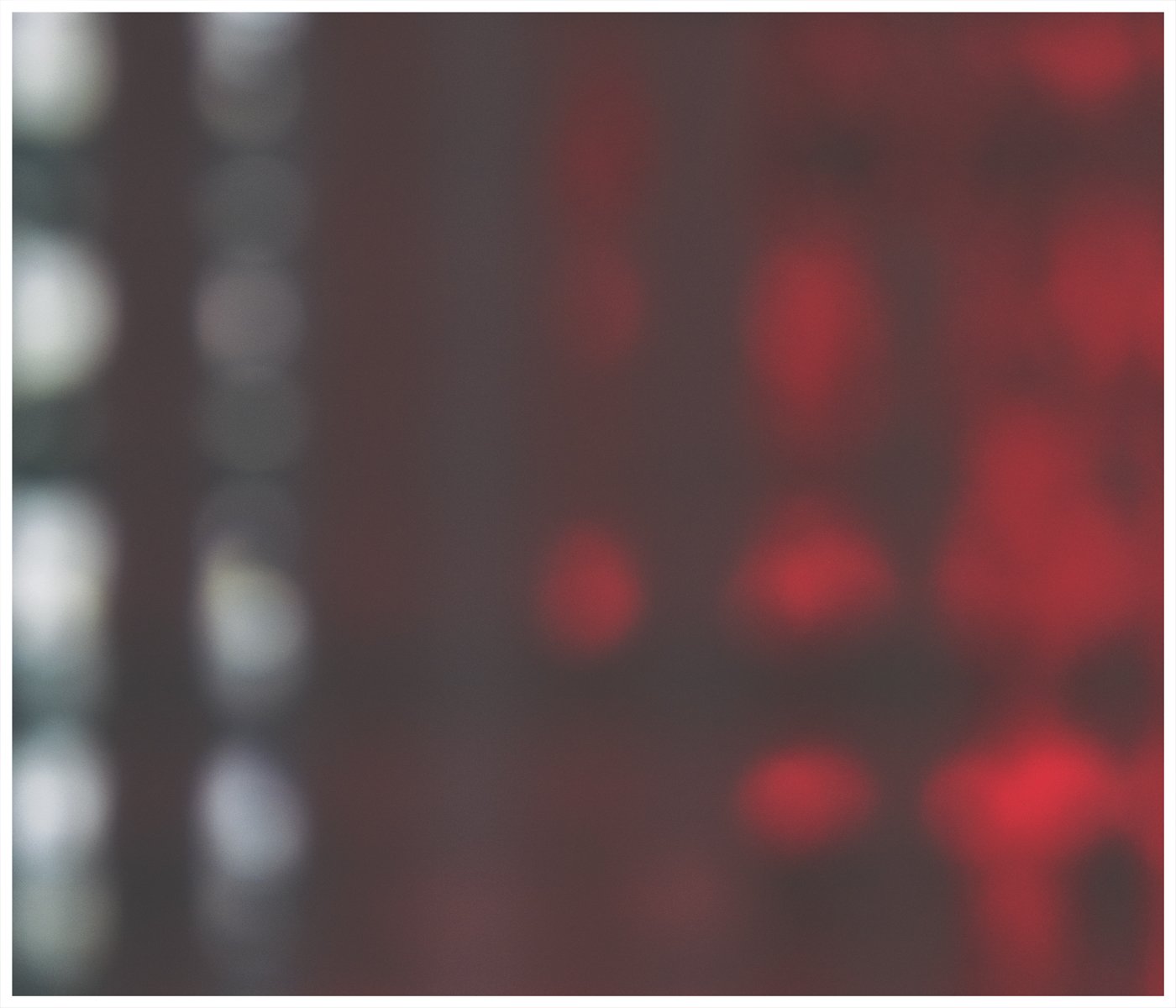
Andrew Zawacki
INSTALLATION 11
Live birds glued to all four walls by their feet. A grid of birds from floor to ceiling, all around.
In the spaces between, bright circles of wet red paint (reapplied hourly). As the birds furiously flap, their wingtips dip and smear.
A moving red mass that cries.
Amaranth Borusk and Abraham Avnisan
INSTALLATION 12
A staircase in the center of the room leads both up and down. Take the stairs down and you’ll soon be in complete darkness, for the stairs curve, blocking the light from above. Most visitors pause on the stairs, considering whether to return. If you do pause, a sound will emerge from beneath your foot. It’s the sound of a person breathing as they climb up a long flight of stairs. Continue downwards, all the way to the bottom, for there is a bottom, you will find yourself standing in water to your knees. The water is temperate, even warm.
If instead you take the stairs up, you’ll find they bend just when you thought they would end. Up through the ceiling, up into the outside air. No banister; a precarious climb. Imbedded into the stairs, a device records your breath for the people below. Again, most visitors never make it to the top. But if you do: luminous, transparent, speedy? None of that. The top is an organ and it plays by itself.
Phuong T. Vuong
INSTALLATION 4
Now, having no one to receive these missives, I write into the space between atoms, the emptiness of organs lying dormant, all the aborted plans—
with my permit to carry a concealed weapon, stapled to my eyeball
Shruti Kaul: assistant camera; with Nirguna Poudyal and Nadia Brecl
Amir George
INSTALLATION 6
Wall gridded with nipples all ready to suck, some dripping. Another wall studded with nails the sharp way out: such contrasts made more palpable by scents of blooming lilies and milk spilled over the floor, the floor uneven, even rolling, so one slips on milk and steps on blooms and slides towards breasts or nails while gripping at ropes made only of light, a trick.
Adrian Arias
INSTALLATION 7
In this room there is nothing but a bed. There’s no space to walk around it; to enter, you must climb on. It is the most comfortable bed, and so you lie down, rest your head on a pillow, pull the blanket up. Beside you is a man, twitching, even writhing, in pain. His breath is labored and occasionally he groans.
If you speak to him, he will not answer. If you try to touch him, he will flinch and move away. Lying there, you are on the one hand deeply comforted, and on the other unbearably distraught.
Anais Azul: Music.
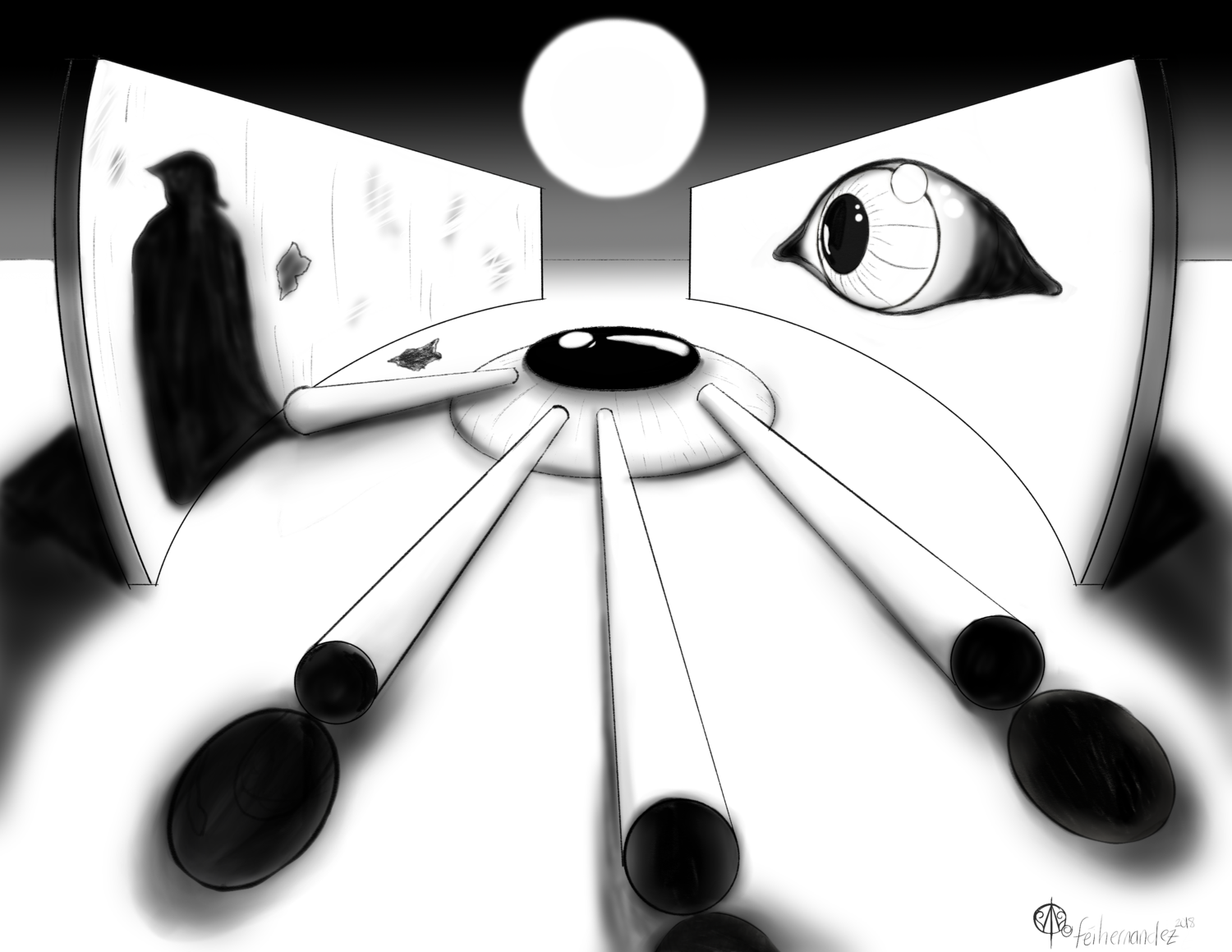
féi hernandez
INSTALLATION 2
A dirt floor, the walls of a cage laid flat under the rooting light of the sun. A girl’s face and torso projected onto the far wall. You want to enter this room without touching anything, but this is impossible. Your presence, most of all, a discharge.
The room is dirty. You want it dirty. The walls are smudged. You like them that way.
The girl’s hand-motions imitate precisely the hand-motions of the President giving a speech about the war, though in fact, she’s only describing the activities of her mother in the bathroom.
Her eyes blink. Her eyes are clear. Is she the “victim” of this room or its angel?
Joe Steele (director / cinematographer) and Ben Roberts (cellist)
INSTALLATION 14
Hanging from invisible threads: a gathering of swords. Points down, they sway slightly, glinting in the light. The tips of these swords dangle just above your head, or, if you are tall, might graze your crown. Shorter people, children, can walk unbothered. Tall women, most men, stoop or find their heads bloodied. Music: Dvorak cello concerto in B minor: practiced by an 18-year old, written in 1894, reluctantly and at the end of the composer’s life: a tribute to his recently deceased sister.
Rand Phillips: assistant camera and sound
Yanara Friedland
INSTALLATION 8
A series of small stages, each curtained by black gauze. The curtains do not part but indicate the objects behind them. One pulses outward, floats back down, pulses out, floats back down. Another shakes as if blown by a constant wind. A third seems draped over a bulky armchair. There is nothing beautiful about this installation. You walk from stage to stage confronting the many times you have lied or failed to care for someone.
K.J. Holmes
INSTALLATION 10
Enormous projections of the inside of your own body. Heart and lungs on the right side, stomach, liver, kidneys on the left. The wall before you shows your brain, behind you, your womb and whatever might be inside it. If another person enters the room, the images will no longer be clear—for the inside of that person’s body will be superimposed over yours. It will be difficult to tell whose lungs, whose heart, whose brain. Try breathing faster—see if you can discern the rhythm of your own lungs. But the other person might breathe faster as well. When a third person enters, then a fourth, the walls are a blur of light and color, moving forms. You wish the others would leave so that you could see yourself more clearly. But they are wishing this too.
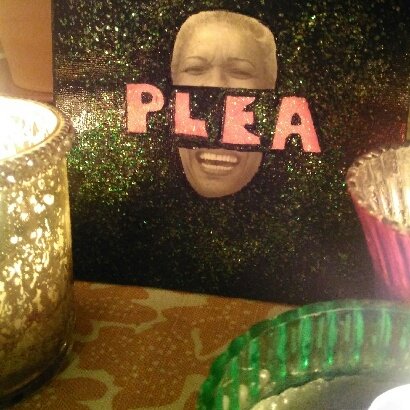
Linda Norton INSTALLATION 13 In which the body of the eleven-year-old girl, drowned off Long Island Sound, is returned to her father. He lowers his hands from his face. The room is not draped, lit, or in any way decorated.
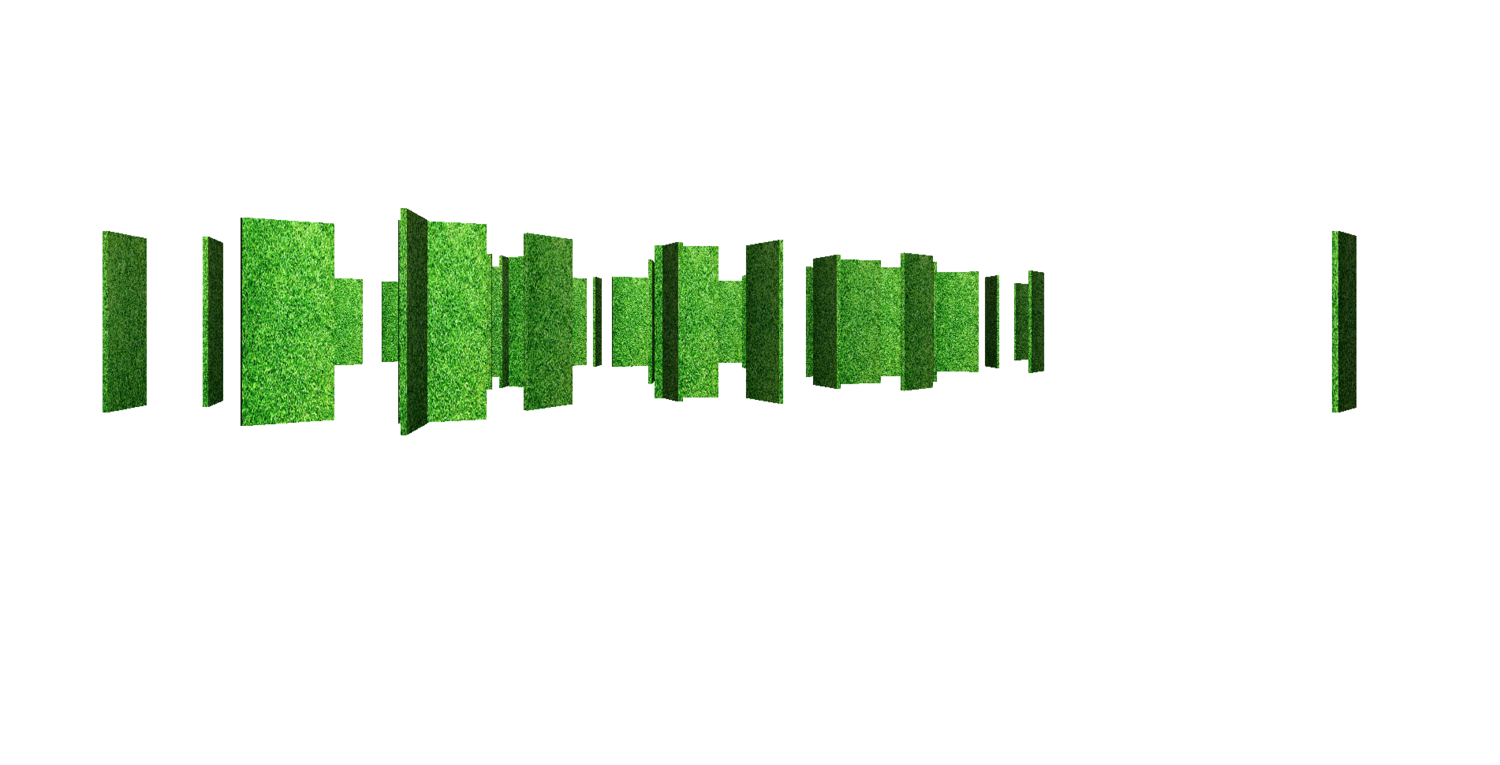
Joel Swanson INSTALLATION 16 An outdoor installation. We install the tall doors outdoors. Thirty doors open out to the out. Thirty open in to the out. In all, sixty tall doors installed in the outdoors. Doors arranged in a range of angles, in a range of ways. Sway out sway in, doors in a wind. To be moved through and through again.
Miguel Gutierrez and the Powerful People INSTALLATION 15 A woman walks a room wearing nothing but a translucent tent that hangs from a halo attached to her head. Others in the room passionately argue, or gather in groups for a photo. The woman under the net is crying, but you can’t know this unless you are close enough to smell her. The room is very cold. You will not want to stay here for long.
Kelly Sears
INSTALLATION 20
Windy. Bright. The illusion of standing in a field in the fall. Instead of sky, thousands of eyes watch you from above, the eyes (hidden projectors in the floor) of thousands of people, young and old, male, female, black white, all the cold binaries, though who would know. The walls seem to recede. As you walk the eyes follow you. Roof of eyes, sky of eyes. The phrase house of dust enters your mind.
This video is on loop.
Gesel Mason
INSTALLATION 23
In a meadow
you are walking all alone, but someone
is watching you.
INSTALLATION 24: a public fountain
A man in a veil. A red flower tattooed on his belly. An open wound on his forehead underneath the fluttering cloth. A bird hangs suspended beside him. Behind the man, whose eyes remain closed, rags of the sea. In his hand, a folded piece of paper. Take it from him, unfold it: written in cursive, the lyrics to “The Ballad of Easter Eve,” which tells the story of three daughters sleeping while their mother writes letters to her murderer.
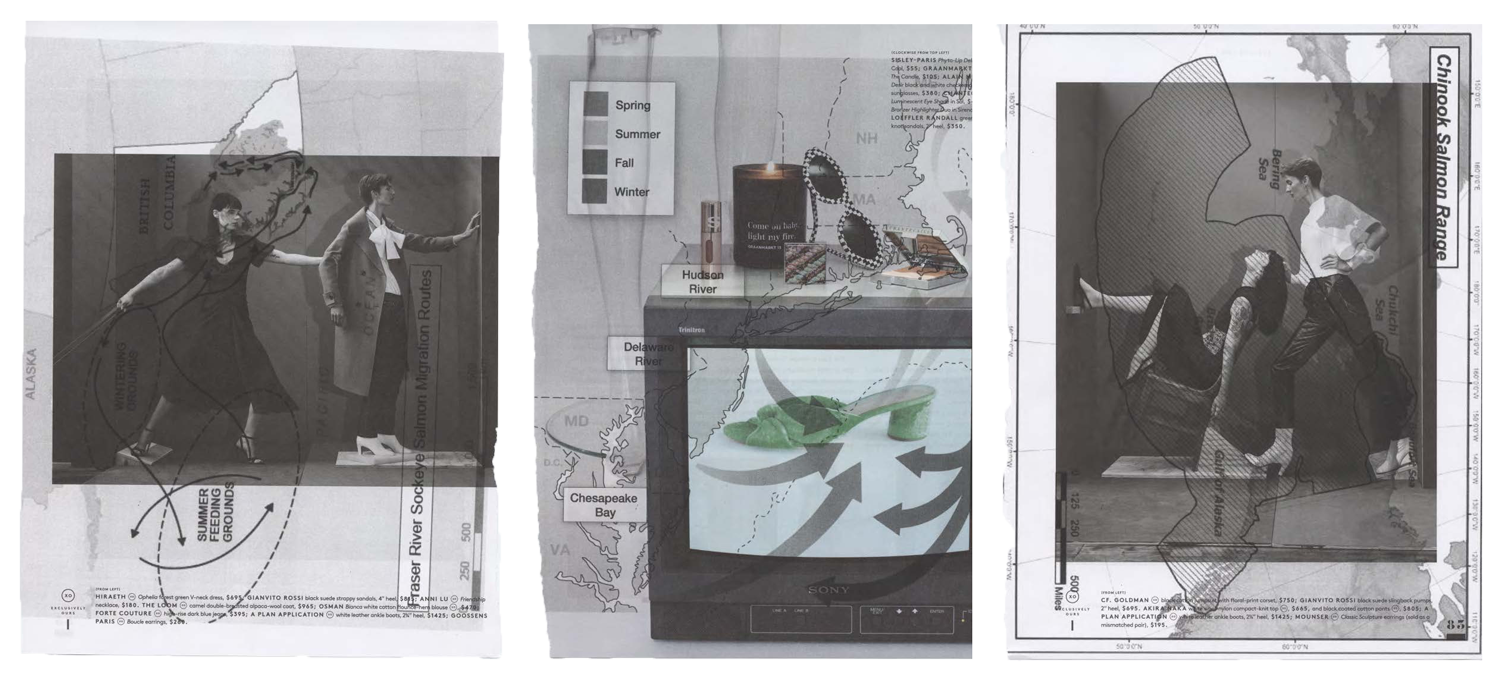
Sara Falk-Mann
INSTALLATION 29: SEX
A small bit of chocolate drops down inside your sweater
On the wall, a chart details the acceleration and deceleration of salmon swimming against a current at the beginning of a Saturday in the spring.
J. Michael Martinez
AN INSTALLATION ON HOME: 31
One room so brightly lit that one can see nothing at all on entering but the “blinding.”
Another room that appears to have no floor. Stand at the threshold, you’ll be afraid to step in, the floor an endless chasm, like the sky but reversed.
A series of rooms, the replicas of bedrooms, every bedroom you’ve ever called yours. Everything’s there: the dressers, the closets, the clothing, the desks, the bedside tables with their digital clocks, the posters pinned to the walls, the books on the floor or on shelves. Everything’s there except the beds. Masking tape marks the rectangle where the bed would have been. Where is my bed? you say each time walking in, your voice rising.
Leah Lovett
INSTALLATION 33
“Everything appears for others eyes” emblazoned in neon across the far wall. An animal is eating out of vision’s range. The walls look wet when the light hits them.
The light is coming from you.
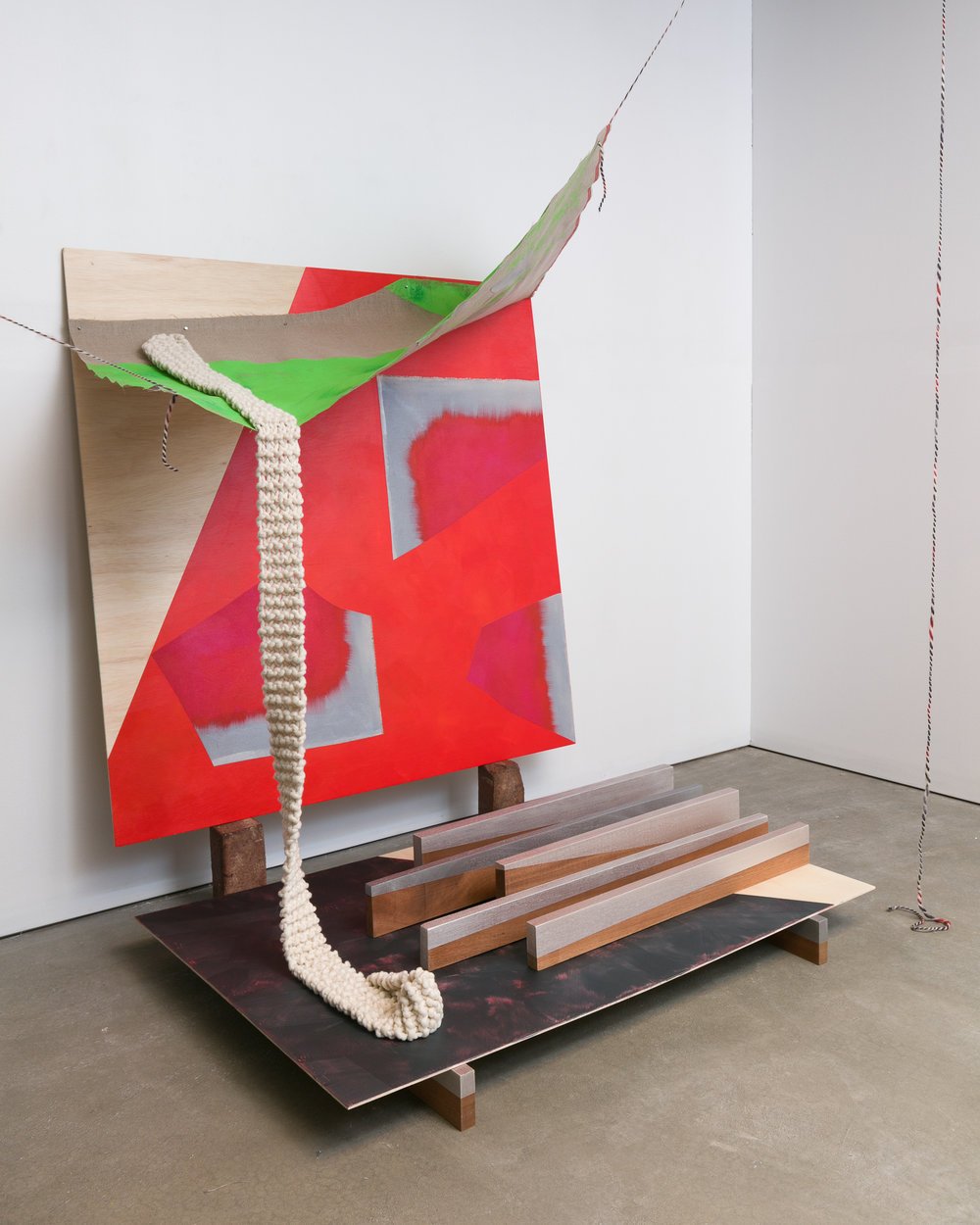
Carin Rodenborn
INSTALLATION 35
A moss grows on the roof, a mold on the ceiling. There are objects in the room, but they aren’t important. I could name them, but you already know what they are because they are your objects. The oven is stuffed with bread that rises and never stops rising. But I don't need to tell you what’s in the oven; you put it there.
I’ve never been outside. The chair I’m in is my own body, just the part I can’t feel, says the voiceover.
Edwin Torres
INSTALLATION 38
This installation is on the outside of a building. The walls are brick. To enter, go out and look up. Seven bodies suspended from ropes hang at various heights. The ropes, from old fishing ships, wrap around their waists, chests, or hips. The bodies are naked and their torsos have been cut, one could say, “flayed” (this could be an effect of makeup, or the wounds could be real). They hang, more or less horizontally, with limbs dangling. Eyes are closed. Faces hard to read. Silences, they just sway. Almost imperceptibly they are lowering. The installation is called “Resurrection.”
Viewers might seat themselves in chairs set randomly around. When it begins to rain the viewers will rise. Not water but seeds are falling—on the viewers and on the bodies that sway.
Phuong T. Vuong: video editing support
Samuel Ace
INSTALLATION 42
Sounds: The scrape of a thick rope sliding along the pavement and the whish and drip of a poorly functioning air conditioner. You enter with weights in your pockets – you must move slowly.
Under your feet, mint grows. If you bend to pick it, a phone will ring. Answer the phone; it’s your ex-lover. He tells you he is moving into your childhood home, that his daughter is attending your childhood school. Put the phone down and all the shades fly up. Your mother’s face flies up with the shades, though this is not something you can see. Walk through the room with your feet dragging, crushing mint.
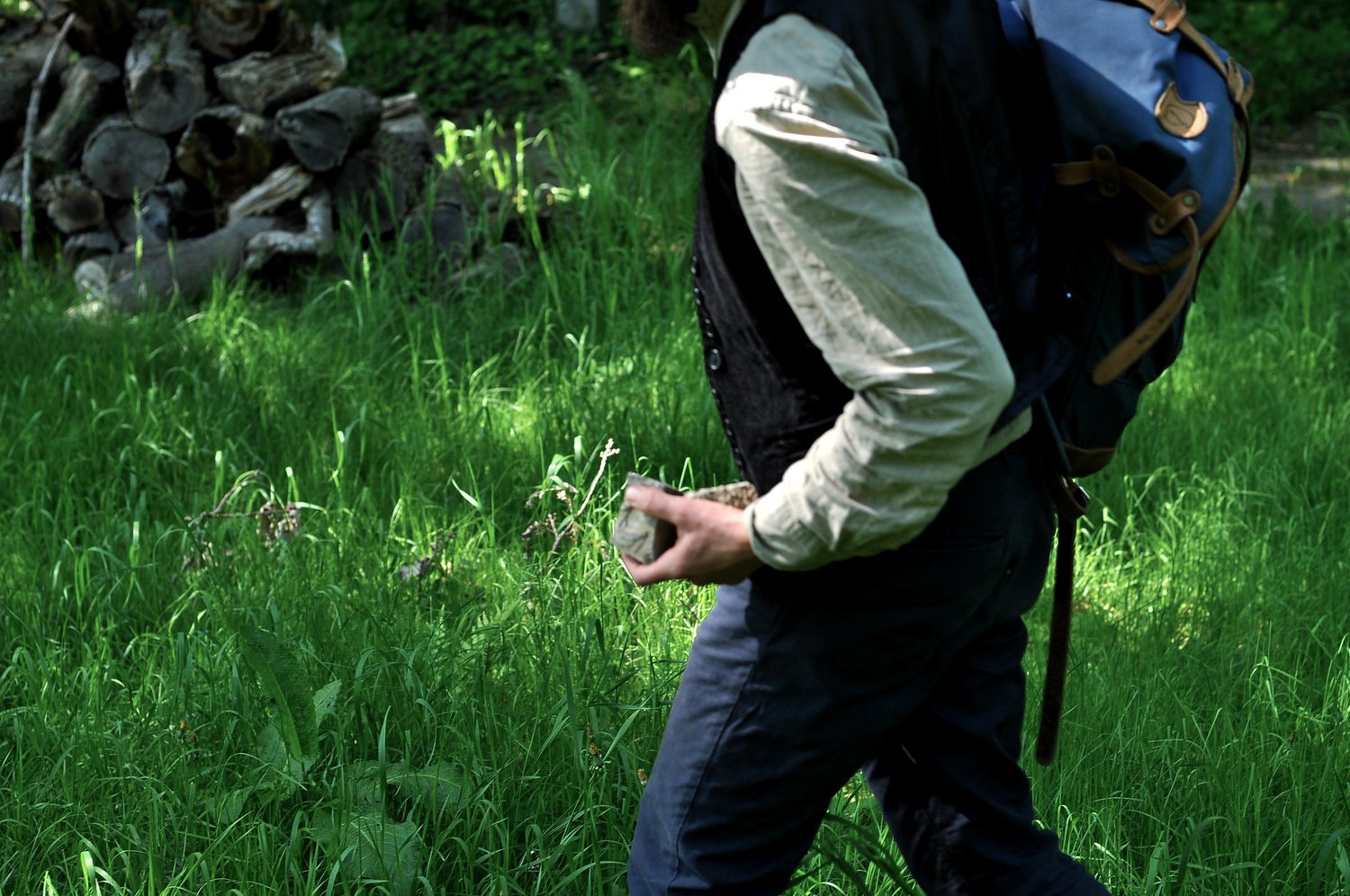
Robert Yerachmiel Sniderman and Nina Berfelde
INSTALLATION 43
Everyone who enters this room must pick up a very heavy stone from a diminishing pile. These stones are so large that people need two hands to carry them. Various methods of carrying: close to the chest, on one shoulder, held low and swinging in front. Each person must carry their stone to the other side of the room where they will place it on a growing pile. And then, they can leave.
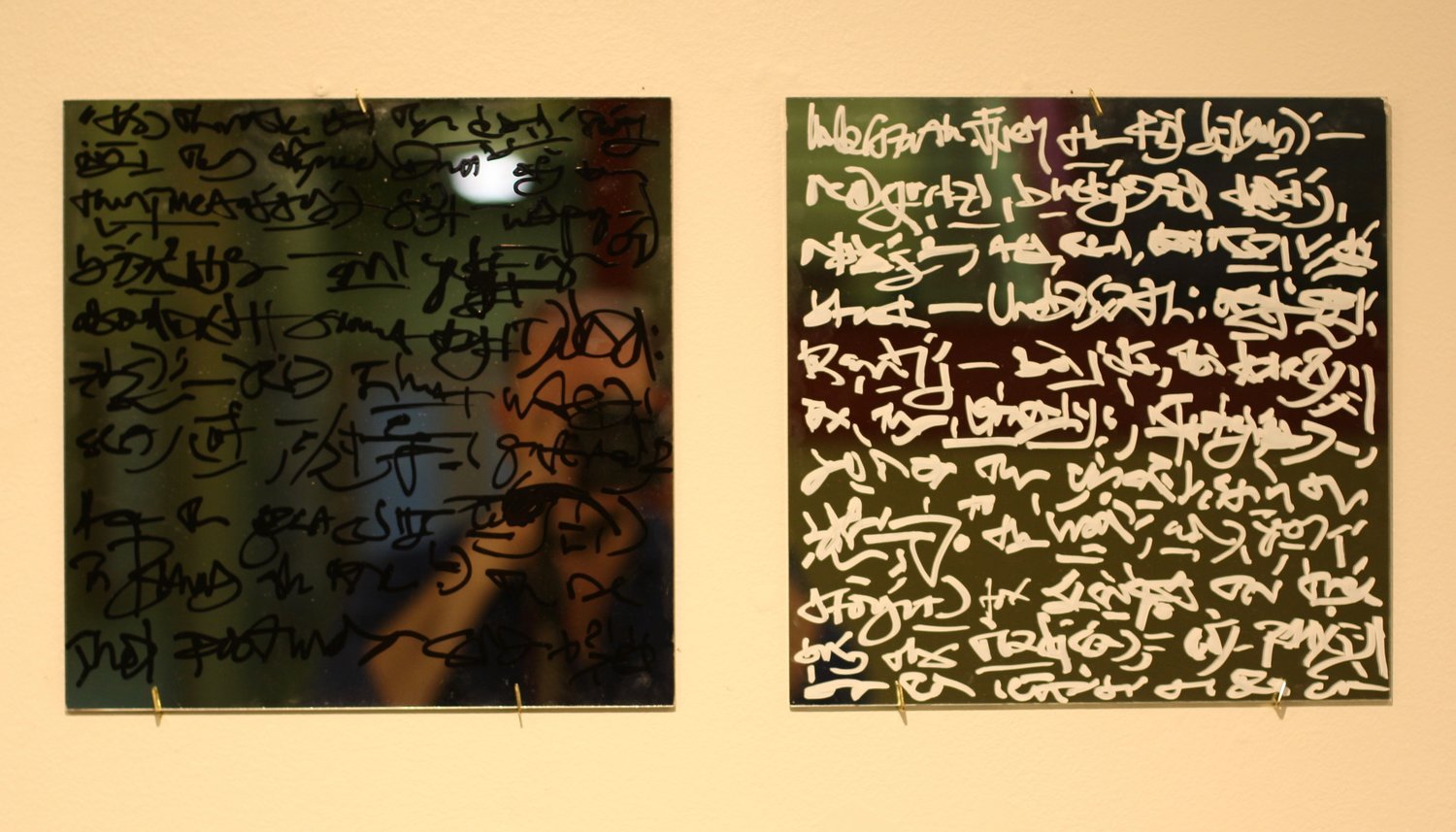
Jeffrey Pethybridge
Installation featuring illegibly tiny handwriting on mirrors.
Niki Tulk
INSTALLATION 41
The first thing you’ll notice is that the room is too hot. Take off your coat; someone is there to take it. Take off your sweater. She’ll take that too. Standing there in your t-shirt, your eyes adjust to the light. Rotating objects in the room appear ghostly: a round table heaped with food (bread, bananas, cereal in boxes), a shovel set vertically on a platform. A tiny silver cage on a stick.
Every seven minutes (not everyone will stay that long), the light flashes bright, and there, in each corner, a child is squatting. He or she eats an apple or a sandwich. And then the lights go dark, and the child lives on in your overheated mind.
Erin Espelie
INSTALLATION CALLED “REALLY BRIEF NATURE FILMS”
Erin Espelie
UNSEEN INSTALLATION
This installation, like so many others, is outdoors. It cannot really be seen, for its primary object, will, if looked at directly, burn, damage, even ruin the eyes. You look, instead, around the place. You see that object, that light, reflected in others—on their skin, in their hair, like illuminated masks or veils. This, for some, is enough. For others, it causes only frustration. Wanting to get to the origin of this light, this heat, but unable, some will approach these others not as secondary and adequate sources of light, but instead as objects in the way. “Viewers” will, therefore, do one of two things: either they will admire one another, or they will seek to destroy one another. Meanwhile, the installation, the source, burns on, unseen.
Brent Cox
A HISTORY OF THE ART INSTALLATION: SIZE
The earliest works were small and domestic—intimate theatrical settings no bigger than a child’s bedroom. A man’s coat hangs on a hook. A typewriter sits in a corner. Glass shards in a pile on a glass table. An open diary difficult to read. The middle period is dominated by the outsized and absurd: huge lumpy beds, as if for giant trolls, grand pianos under spotlights, massive chandeliers spun of human hair threaded with teeth. Eventually these works outgrow the gallery, moving into the outer world. At the apex of this middle period, we have a work that spreads across a desert (an arrangement of stones best viewed from the air) and another that extends the entire length of the Colorado River (a silk ribbon that seems never to end). But the third period returns, bit by bit, to the intimacy of the first, drawing our attention once again inward. First the dirt and rocks of the landscape find their way back into the gallery, piles of stones, circles of sand, trees and grasses growing right from the floor. Next the weather itself moves indoors: fine mists, rainbows, artificial sunlight, or the total darkness of night. Now that what was “outside” is “in,” human forms are reintroduced—the body itself, its basic functions (eating, sleeping, sex), its extravagant acts (dance, acrobatics)—and then the orifices become installations all on their own: insects crawl from the woman’s vagina, Jell-O spills from her mouth. As the focus of the installation goes further inward still, by way of technology’s ever more probing devices, it reaches the very organs, nervous systems, and hormones of the body: imaged, charted, graphed.
What explains this movement, this swelling and contracting?
This video features Courtlin Byrd.
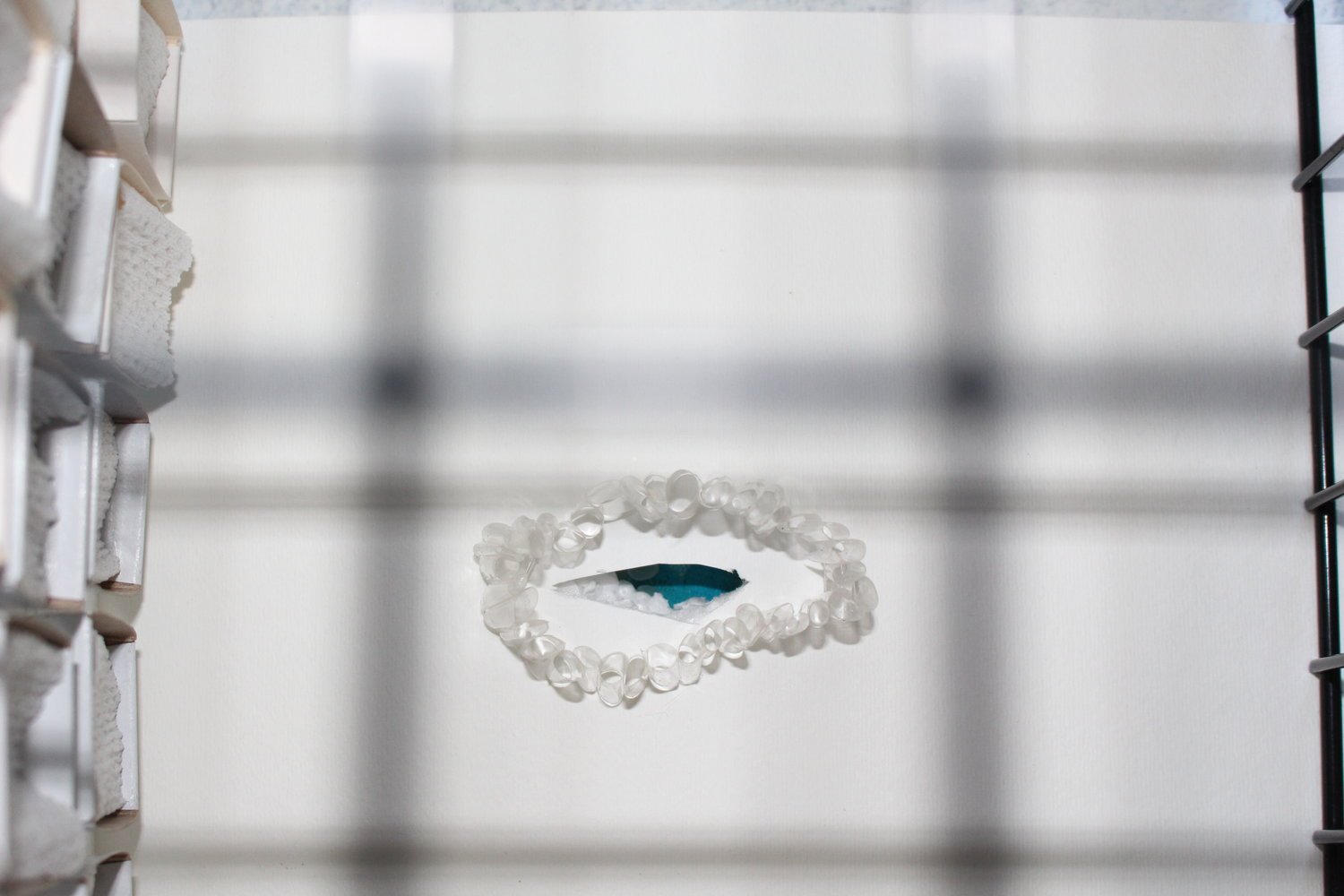
Ximena Serrano
INSTALLATION 17
Low light. 17 prison beds screwed into each wall vertically, so that none can lie down. Mattress and bedding affixed to the frame, but there is gravity. Everything pulls and sags. In the center of the room: a hole.
Far down inside the hole, water. Empty water glasses are arranged in a circle around that hole, but there is no way to get the water out. Deeper than anyone’s arm. Too narrow for a body.
Alternating blasts: strong and dusty wind / scent of ammonia. The distance between our “moods” and their artificial proxies shrinks down.
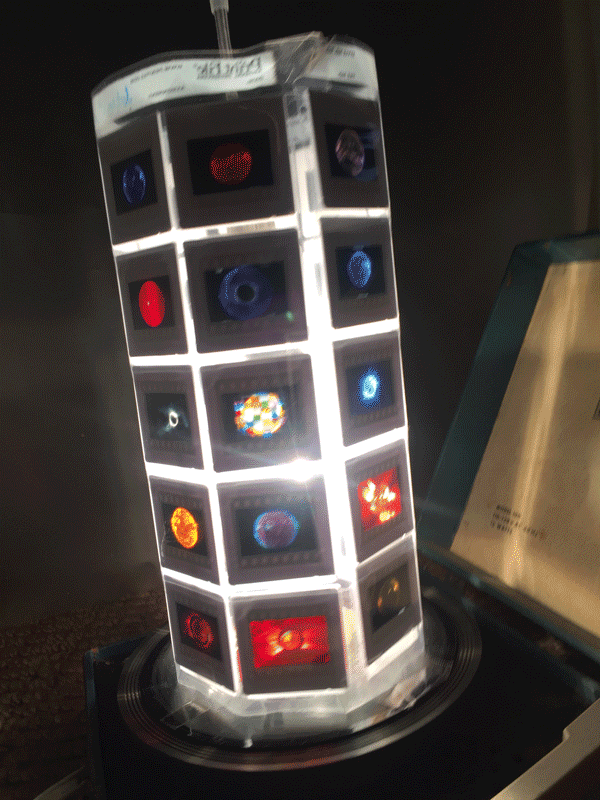
Jeanne Liotta
INSTALLATION 44
In the center of the room, a spacecraft designed only for probing—its long blue solar-panel wings, its insect-like body, at rest. Dozens of bats dart through the darkened room. On all four walls: the filmed history of the sun—from birth to death—on loop.
Michelle Ellsworth
APPENDIX: FUTURE INSTALLATIONS
Installation called: “Really brief nature films”
Installation called: “On the day the government finally really did shut down, the great Italian chef finally really did die.”
Installation called: “Orphan flames from film stills of the sun”
Installation called: “Novice bird corpse in a squall”
Installation called: “Prosthetic vagina in a plastic atmosphere”
Installation titled: “Being: a diorama, or, Mathias on a bus”
Installation in which a woman alone and naked on a bed gives herself over and over to an imaginary partner. Finally, she gets up and asks a nurse for a cigarette. The nurse gives it to her and the woman returns to the bed to smoke.
Installation featuring illegibly tiny handwriting on mirrors.
An installation regarding ants.
An installation titled “Everyone knows what that is”

